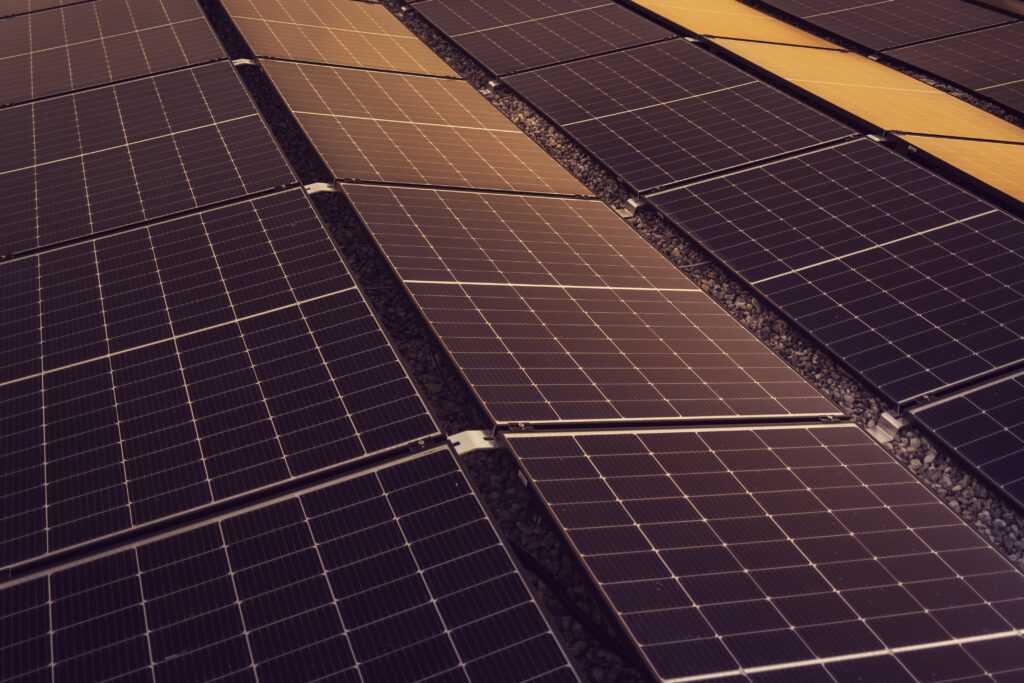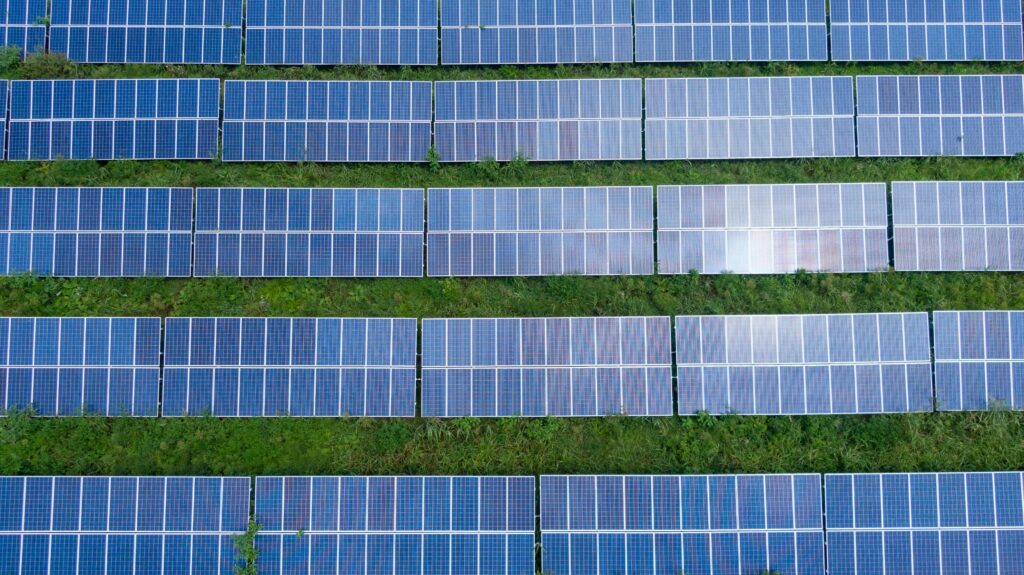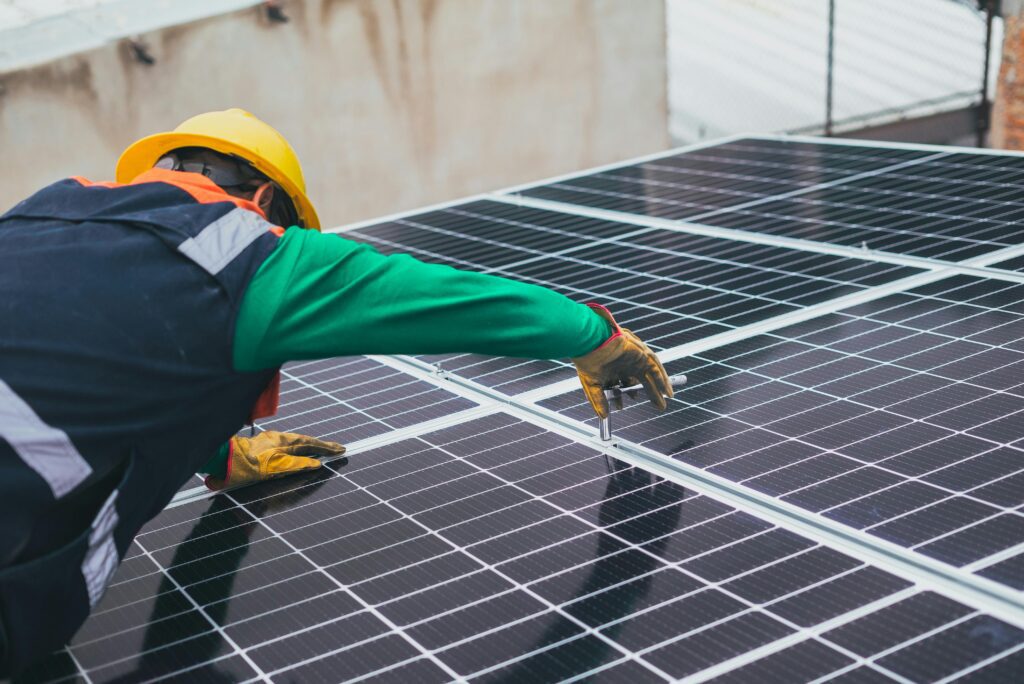Food waste has serious consequences. When food is thrown away, it wastes all the resources used to produce it, like water, energy, and labor. This waste affects the environment, economy, and society in many ways. Let’s Get Right into the best ways to save Food with the help of Solar Panels in 2024.
Table of Contents
Environmental Impact
When food waste ends up in landfills, it decomposes and produces methane, a greenhouse gas that is much more potent than carbon dioxide. This contributes to global warming and climate change. Moreover, the resources used to produce the wasted food, such as water and land, are also wasted. This leads to deforestation, water shortages, and loss of biodiversity.
Economic Impact
Food waste also has a significant economic impact. The money spent on producing, transporting, and storing food that ultimately gets wasted is lost. This affects farmers, businesses, and consumers. Reducing food waste can save money and resources, benefiting the economy.
Social Impact
On a social level, food waste is a critical issue. While millions of tons of food are wasted, many people around the world go hungry. Reducing food waste can help address food insecurity and provide more food to those in need.

How Solar Energy Save Food
Solar energy provides innovative solutions to help reduce food waste. By using the sun’s power, we can preserve food in ways that are both efficient and environmentally friendly.

Solar-Powered Refrigeration
Solar-powered refrigeration is a game-changer, especially in areas without reliable electricity. These fridges use solar panels to keep food cool and fresh. They are perfect for storing perishable items like fruits, vegetables, and dairy products.
Extended Freshness:
Solar-powered fridges keep food fresh for longer periods by maintaining a consistent, cool temperature. This prevents the growth of bacteria and mold that cause food to spoil quickly.
Energy Savings:
Traditional refrigeration can be costly, especially in areas with high electricity prices. Solar fridges use clean, renewable energy from the sun, drastically reducing electricity costs and reliance on fossil fuels.
Remote Access:
In many remote and rural areas, access to a stable electricity grid is limited or non-existent. Solar refrigerators are ideal in these locations, providing a reliable way to store food safely without the need for a conventional power source.
Solar Drying Techniques
Drying food is an excellent way to preserve it, and solar drying makes this process more sustainable. By using solar dryers, we can remove moisture from fruits, vegetables, and grains, making them last longer without spoiling.

Nutrient Preservation:
Solar drying helps retain the essential vitamins and minerals in food. Traditional drying methods can sometimes destroy these nutrients, but solar drying uses gentle, natural heat to maintain the food’s nutritional value.
Cost-Effective:
Solar drying is a low-cost method that requires minimal investment. Unlike electric dehydrators, which consume a lot of energy, solar dryers harness the free energy of the sun. This makes it an affordable option for both small-scale farmers and large agricultural operations.
Scalable:
Solar drying can be adapted to different scales. At a household level, small solar dryers can be used to preserve garden produce. On a commercial scale, larger solar drying units can handle significant quantities of food, helping to reduce waste on farms and in food processing facilities.
Solar-Powered Cold Storage
Solar-powered cold storage units are another revolutionary application of solar energy in reducing food waste. These facilities use solar panels to power large refrigeration units that store perishable goods like fruits, vegetables, and dairy products.
Reduced Post-Harvest Losses:
In many regions, a significant amount of food is lost between the farm and the market due to a lack of proper storage. Solar-powered cold storage units help keep produce fresh from the time it’s harvested until it reaches consumers.
Economic Benefits:
Farmers can sell their produce at better prices by storing it until market conditions are favorable. This reduces the pressure to sell immediately after harvest when prices are often lower.
Environmental Impact:
Using solar energy for cold storage reduces reliance on diesel generators and other fossil fuels, decreasing greenhouse gas emissions and promoting a cleaner environment.
Solar-Powered Irrigation
Efficient irrigation is crucial for food production, and solar-powered irrigation systems provide a sustainable solution. These systems use solar panels to power water pumps, ensuring that crops receive adequate water without the need for grid electricity.
Water Conservation:
Solar-powered irrigation systems can be equipped with sensors and automation, optimizing water usage and reducing waste. This ensures that crops get the right amount of water, enhancing growth and reducing the risk of overwatering.
Energy Independence:
Farmers can become energy-independent with solar-powered irrigation. They no longer need to rely on unreliable or expensive grid electricity, which can be a game-changer in remote areas.
Increased Yields:
Consistent and efficient irrigation leads to higher crop yields. This means more food is produced with the same amount of land, reducing the need to clear additional land for agriculture and helping to preserve natural ecosystems.
Solar-Powered Processing and Packaging
Solar energy can also be used in the processing and packaging stages of food production, helping to reduce waste and improve efficiency.
Solar-Powered Processing Plants
Solar-powered processing plants utilize solar energy to power machinery and equipment used in processing food. This includes cleaning, cutting, cooking, and packaging food products.
Energy Efficiency:
Solar energy reduces the reliance on traditional electricity sources, leading to significant cost savings. Processing plants often operate around the clock, and solar power can provide a sustainable and continuous energy supply.
Reduced Carbon Footprint:
By using solar energy, processing plants can lower their carbon footprint, contributing to environmental sustainability. This is especially important as the food industry seeks to adopt greener practices.
Improved Productivity:
Solar-powered systems can be designed to store excess energy, ensuring that processing activities can continue even when the sun is not shining. This improves productivity and reduces downtime.
Solar-Powered Packaging Solutions
Packaging plays a crucial role in preserving food and reducing waste. Solar-powered packaging solutions include the use of solar energy to power packaging machinery and produce sustainable packaging materials.
Sustainable Materials:
Solar energy can be used to manufacture biodegradable and compostable packaging materials. These materials help reduce waste and are better for the environment compared to traditional plastics.
Efficient Operations:
Solar-powered packaging machines ensure that the packaging process is efficient and uninterrupted. This helps in maintaining the quality and shelf-life of food products.
Reduced Costs:
Utilizing solar energy for packaging can significantly reduce operational costs, making it a cost-effective solution for businesses.
The Future of Solar Energy in Food Preservation
The potential of solar energy in reducing food waste is immense. As technology advances, we can expect even more innovative solutions to emerge.
Solar Innovations on the Horizon
Advanced Solar Panels:
Newer solar panels with higher efficiency rates can generate more energy, making solar-powered food preservation systems even more effective.
Solar-Powered Sensors:
Integration of solar-powered sensors in agricultural practices can monitor soil moisture, weather conditions, and crop health. This data can be used to optimize irrigation and harvesting, reducing waste.
Solar Desalination:
Solar desalination technology can provide fresh water for irrigation and food processing in areas with limited water resources, ensuring a steady supply of clean water for agriculture.
Global Impact
Adopting solar energy for food preservation can have a global impact. It can help combat food insecurity, reduce greenhouse gas emissions, and promote sustainable development.
Empowering Communities:
In developing regions, solar energy can provide reliable and affordable solutions for food preservation, empowering communities to become self-sufficient.

Reducing Food Loss:
By minimizing post-harvest losses and improving storage and transportation, solar energy can significantly reduce the amount of food wasted.
Environmental Sustainability:
Utilizing solar energy reduces reliance on fossil fuels, decreasing pollution and conserving natural resource
Solar-Powered Refrigeration: Keeping Food Fresh Longer
Solar-powered refrigeration is a critical technology in preserving perishable food items. These systems maintain consistent, cool temperatures, preventing the rapid spoilage of fruits, vegetables, dairy products, and meats. By extending the freshness of these items, solar refrigerators help reduce the volume of food wasted, especially in areas with unreliable electricity supply. This technology is particularly beneficial in remote regions, ensuring that communities have access to fresh food without relying on traditional power sources.
Solar Drying Techniques: Preserving Nutrients and Reducing Waste
Solar drying is an effective method to preserve food by removing moisture, which inhibits the growth of bacteria and mold. This process is energy-efficient and cost-effective, making it accessible to small-scale farmers and large agricultural operations alike. Solar drying retains the nutritional value of food, providing a healthy option for long-term storage. This technique is essential in reducing post-harvest losses and ensuring that surplus produce can be stored for future use, rather than being wasted.
Solar-Powered Cold Storage: Reducing Post-Harvest Losses
Solar-powered cold storage units play a crucial role in minimizing post-harvest food losses. These units use solar energy to power large refrigeration systems, keeping harvested crops fresh until they reach consumers. By providing a reliable and sustainable storage solution, solar cold storage helps farmers avoid the economic losses associated with spoilage and allows them to sell their produce when market conditions are most favorable. This technology not only preserves food but also enhances the economic stability of agricultural communities.
Solar-Powered Irrigation: Optimizing Water Use for Better Yields
Efficient irrigation is vital for successful food production, and solar-powered irrigation systems offer a sustainable solution. These systems use solar energy to pump water, ensuring that crops receive adequate hydration. By integrating sensors and automation, solar-powered irrigation can optimize water usage, reducing waste and improving crop yields. This method is particularly advantageous in arid regions, where water conservation is crucial. The increased yields from efficient irrigation contribute to food security and reduce the need to expand agricultural land, preserving natural ecosystems.
Solar-Powered Processing and Packaging: Enhancing Food Preservation
Solar energy can also be utilized in food processing and packaging, reducing waste and improving efficiency. Solar-powered processing plants use renewable energy to power machinery involved in cleaning, cutting, cooking, and packaging food products. This reduces reliance on traditional electricity sources and lowers operational costs. Additionally, solar-powered packaging solutions, including the production of biodegradable materials, offer an environmentally friendly alternative to conventional plastics. These sustainable practices ensure that food is preserved effectively, further reducing waste and supporting a circular economy.
Innovative Solar Technologies: Shaping the Future of Food Preservation
The future of food preservation with solar energy is promising, with ongoing advancements in technology. Newer, more efficient solar panels, solar-powered sensors, and solar desalination systems are expected to enhance food production and preservation. These innovations will provide reliable solutions for water and energy needs in agriculture, further reducing food waste and promoting sustainable practices.
Global Impact: Empowering Communities and Protecting the Planet
The adoption of solar energy in food preservation has the potential to make a significant global impact. In developing regions, solar technologies can empower communities by providing reliable and affordable solutions for food preservation. This helps combat food insecurity and supports self-sufficiency. By reducing food loss and minimizing post-harvest waste, solar energy contributes to economic stability and environmental sustainability. The decreased reliance on fossil fuels leads to lower greenhouse gas emissions, promoting a healthier planet for future generations.
Conclusion
Solar energy provides a transformative solution to the pressing issue of food waste. By harnessing the power of the sun, we can implement sustainable practices across various stages of food production, storage, and distribution, leading to significant reductions in food waste and environmental impact.
Frequently Asked Questions (FAQ)
1. How does solar energy help in reducing food waste?
Solar energy helps in reducing food waste by powering technologies that preserve food for longer periods. Solar-powered refrigeration units keep perishable foods fresh, while solar dryers extend the shelf life of fruits, vegetables, and grains. Solar cold storage solutions reduce post-harvest losses, and solar-powered irrigation optimizes water use, enhancing crop yields and reducing waste.
2. What are the benefits of using solar-powered refrigeration systems?
Solar-powered refrigeration systems offer several benefits:
Extended Freshness:
- They maintain a consistent, cool temperature to prevent spoilage of perishable goods.
Cost Savings:
- These systems use renewable solar energy, reducing electricity costs.
Remote Accessibility:
- Ideal for areas with unreliable electricity supply, providing a reliable solution for food storage.
3. Can solar energy be used for large-scale food processing?
Yes, solar energy can be used for large-scale food processing. Solar-powered processing plants can operate machinery and equipment used in food cleaning, cutting, cooking, and packaging. This reduces reliance on conventional power sources, lowers operational costs, and minimizes the carbon footprint of food processing.
4. What is solar drying, and how does it help reduce food waste?
Solar drying is a method of preserving food by removing moisture using solar energy. This process prevents the growth of bacteria and mold that cause spoilage. Solar dryers can be used to dry fruits, vegetables, and grains, making them last longer and reducing post-harvest losses.
5. How does solar-powered irrigation contribute to reducing food waste?
Solar-powered irrigation systems use solar energy to pump water for crops. This technology helps in optimizing water usage, ensuring that crops receive adequate hydration without wasting resources. Efficient irrigation improves crop yields and reduces the need for additional land, contributing to sustainable agriculture.
6. What are the advantages of using solar-powered cold storage for food?
Solar-powered cold storage provides several advantages:
Reduced Post-Harvest Losses:
- Keeps harvested crops fresh until they reach consumers.
Economic Benefits:
- Allows farmers to store produce until market conditions are favorable, maximizing profits.
Environmental Impact:
- Reduces reliance on diesel generators and fossil fuels, lowering greenhouse gas emissions.
7. How can solar energy be used in food packaging?
Solar energy can be used to power packaging machinery and produce sustainable packaging materials. Solar-powered packaging solutions include manufacturing biodegradable and compostable materials, reducing reliance on traditional plastics and minimizing environmental impact.
8. What are the future innovations in solar technology for food preservation?
Future innovations include:
Advanced Solar Panels:
- More efficient solar panels with higher energy conversion rates.
Solar-Powered Sensors:
- Sensors for monitoring soil moisture and crop health, improving irrigation and harvesting.
Solar Desalination:
- Technology to provide fresh water for irrigation and food processing in areas with limited water resources.
9. Are there any challenges associated with solar energy in food preservation?
Some challenges include:
Initial Costs:
The upfront investment for solar technologies can be high, though it may be offset by long-term savings.
Weather Dependence:
Solar energy production can be affected by weather conditions, potentially impacting the availability of power.
Infrastructure Needs:
Effective implementation requires appropriate infrastructure, such as solar panels, batteries, and storage systems.
10. How can communities in developing regions benefit from solar energy in food preservation?
Communities in developing regions can benefit significantly from solar energy in food preservation by:
Providing Reliable Storage:
Solar-powered refrigeration and cold storage offer a stable solution for preserving food.
Empowering Farmers:
Solar-powered irrigation and drying systems improve crop yields and reduce waste.
Enhancing Food Security:
Access to solar technology helps address food insecurity and supports self-sufficiency.